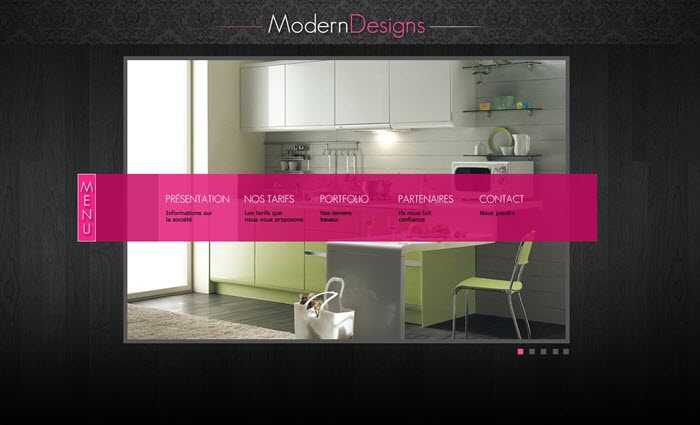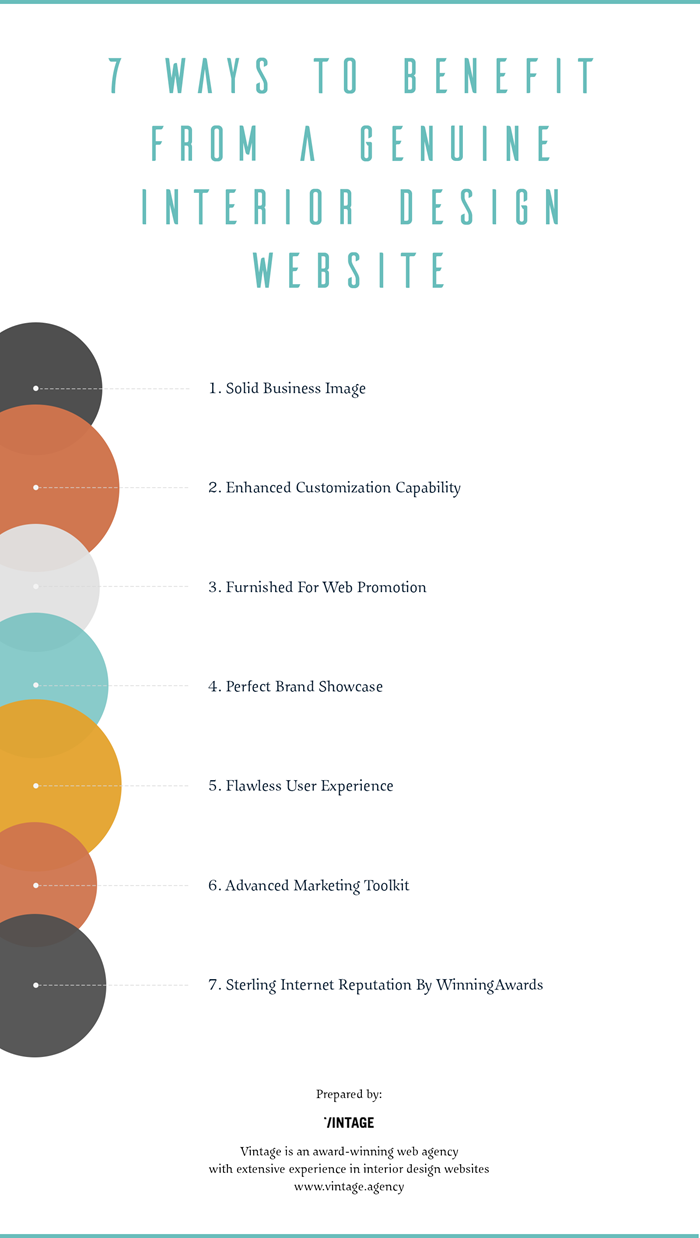Today, the online image of a business is more important than the actual one. For many interior design studios, websites often work worse than they could. Why does this happen, and how can you draw your clients directly from the pool of your website visitors? Let us find out.
If you are an interior designer and wish to start a website, where would you begin? Probably, with a Google search. And there you’ll quickly find a wide variety of instant website solutions, from completely free to fairly cheap ones. Which will give you a totally wrong idea about the website cost, timeframe, and what’s more important, objective.

Website templates have become extremely popular, no argue with that. What can be more satisfying than building your own website with several mouse clicks? Especially, if you are an interior designer, who basically needs a few easily explainable things:
- Portfolio showcase, with possibility to upload and cycle through a large number of images;
- Contact information section;
- Possibility to receive customer feedback;
- Price range and terms of service.
These features will be gladly provided by every other template, and you would think that all you have to do is just pick the one which best suits your taste.
But do not be fooled. Website templates will never do your business any good in the long run. Here, we gathered seven main reasons why you should not even consider an instant online solution for your interior design business.
1. Bad Business Image.
In their structure, websites templates all look alike. When you are looking for the one that would feature the interior designer perks described above, be sure that hundreds of your competitors will make the similar choice. Color palette and some minor elements may differ, but even for a common eye it will be easy to trace the patterns. If, God forbid, it becomes known that two competitors on the same market have similar websites, both will be shadowed by negative business image.
A genuine website, build by a solid web producer, will never resemble a template.
2. Poor Customization.
We are not talking about the initial customization as much as further addition of new features. Templates are only good for a certain number of functions. Their structure is hard to break. Even if, somehow, you manage to integrate the new feature into a pre-configured template, your website will start behaving strangely, because, in its core, it just wasn’t made for it. In the end, you will realize that it is easier - and cheaper - to build a new site from scratch than integrate new functionality into your template.
With a genuine website, your web producer will implement the core integration of every feature you desire.
3. Limited Brand Showcase.
Every interior designer is a brand in his own name. Or at least, this is what he strives to accomplish. The brand image of the interior designer must reflect his style and approach. Images in the portfolio will probably show it, but the template website never will.
On the contrary, if the website is built around the concept rather than a pre-configured template, it is possible to transmit the very soul of designer’s brand into it.
4. Questionable User Experience.
Visitors may enter your site just to admire your works, but sooner or later you expect them to convert into clients. The template UX may actually be a barrier for that. Some templates may look nice, but have poor UX. Others may have had decent UX once, but were overburdened with extensive functionality, which the template can hardly bear.
Templates do focus on user convenience, but to the template producer, the user is you, and not your client. It may be easy enough for you to get around the template, post pictures and turn certain functions off and on, but your visitors will represent a completely different target audience, and for them, UX may not be as bright.
With a genuine website, all target audiences are taken into account before even making the first sketch.
5. Limited Promotion Capability.
A website by itself is just a pretty picture that will only look good to you and your friends. If you want your website to have visitors, you must also make sure it is easily found on the Internet. Templates are often poorly optimized for the needs of promotion, so, even if you manage to make your template really shiny, chances are it will never appear in your clients’ search results.
A genuine website will provide all necessary tools for successful website promotion.
6. Insufficient Marketing Tools.
Website promotion is important, but what about the promotion of your interior design services? Are portfolio, contacts and happy customer’s praises really enough to build a thriving and evolving business? Doubtfully. Your best projects must be portrayed from all angles, and your design style must emanate from the screen of every device.
Only a genuine website, which allows complex integration of shapes, slides and video clips, adjusting them to multiple screen resolutions, will be able to portray your style well enough.
7. No Online Acknowledgement.
What your template website will never do is win awards. This affects your business directly, even if you don’t realize it. Awarded websites get thousands of extra visitors, and more visitors always mean more potential clients. Promotion and awareness of your brand will multiply drastically, if your website is worthy of an award, and even more so if it wins one or two.
And with a renowned web producer, you can rest assured that it does.

Interior designers are people of art. For them, design is not just what they do for living, but the way of self-expression and making the world a better place. Through a website, their vision, desires and cravings are transmitted to millions of people worldwide. Placing a template in charge of this transmission will ruin all beauty behind it.
Choose a genuine website, produced by a worthy web agency, and choose it early, so it can work for you and your business from the very start.
More posts on interior design website development:

View Comments